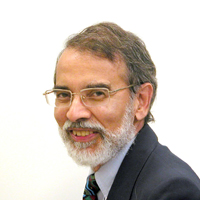
Bibhu Mohanty
Professor Emeritus
Department of Civil & Mineral Engineering
Email: bibhu.mohanty@utoronto.ca
Office: GB
Tel:
Mining + Geomechanics
Background
Prior to his current position, he held the NSERC Industrial Research Chair in Rock Dynamics and Fragmentation. In addition to his research activities, he consults regularly on blast and explosives related issues in the mining industry, and explosion hazards, blast-resistant and containment structures.
Understanding dynamic fracture behaviour of rock is a key step in quantifying response of rock mass to high-energy transient loads such as in drilling and crushing of rock, and fragmentation due to explosive action. This is integral to all civil and mining excavation activities, and determines the safety, economic success, and viability of these operations.
The interaction between transient loads and the target rock is however extremely complex Both components are highly variables: the former on their magnitude, duration, rate of pressure application, and the manner of application; the latter on their strength, fracture characteristics, degree of anisotropy, and macro-structure such as joints, faults and foliation. For example, the detonation properties of commercial explosives such as pressure, energy and rate of pressure rise in borehole are highly dependent on specific in–use conditions. Similarly, the usual rock mechanics parameters obtained under static load conditions are not applicable under dynamic loads. Prediction of blast-induced fractures, fragment size distribution, improvement of drilling and crushing efficiency, and assuring safety of these operations thus represent formidable scientific and technical challenges.
The objective of my research group is to identify the key variables in this complex system, determine their relative importance through appropriate parametric studies. Direct experimental and systematic verification of theoretical predictions remains a cornerstone of this attempt to develop reliable ‘building blocks’, which can then be used to develop predictive models for fracture and fragmentation.